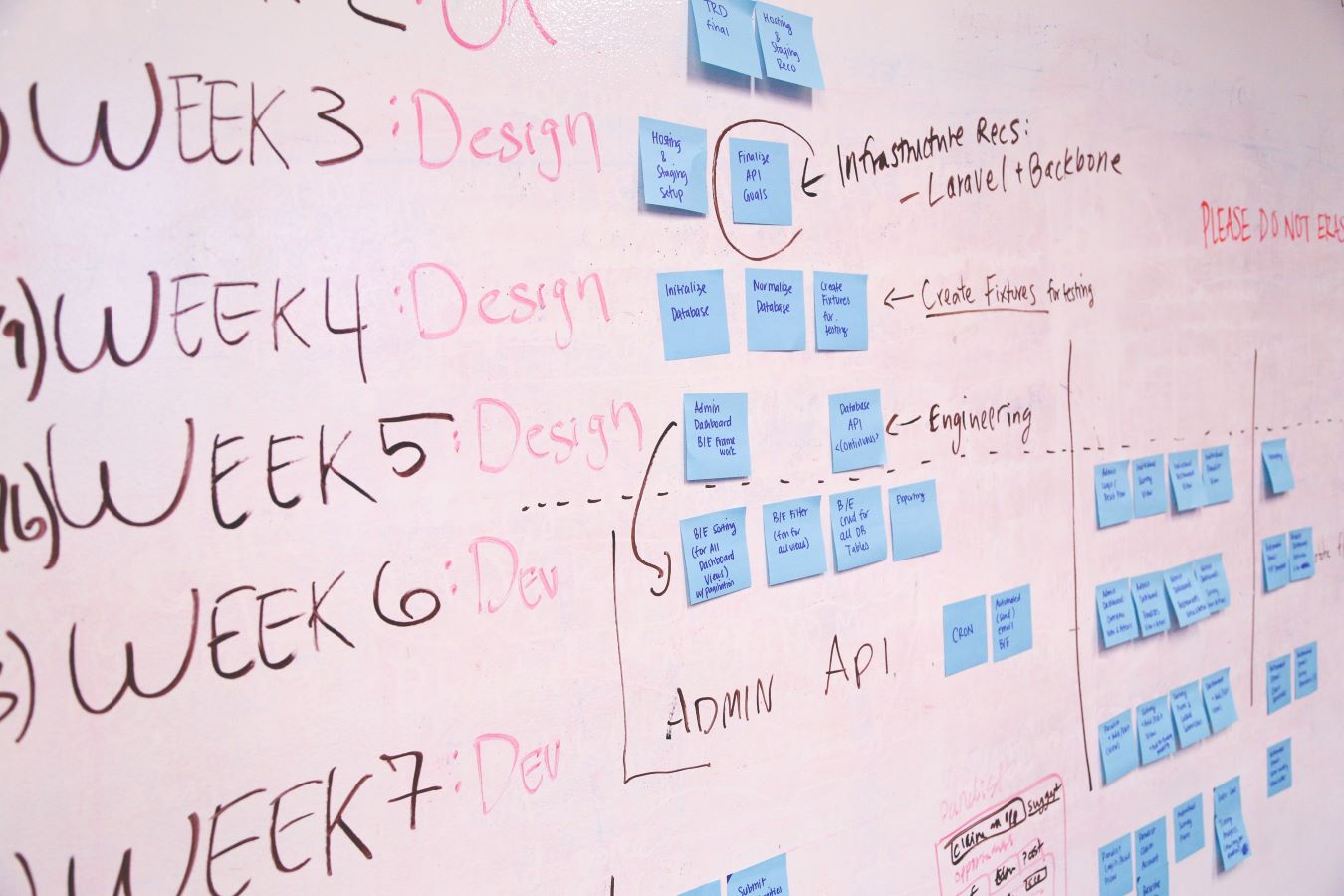
Mentorship Programs and How Businesses Benefit from Them
![]() Speedy Mentors
Speedy Mentors
![]() 3 yrs ago
3 yrs ago
As the business landscape continues to change, having a driven and talented workforce is no longer enough for businesses to maintain their competitive edge. It is equally critical to keep their workforce engaged, motivated and satisfied, and that is where mentorship programs are useful. For the majority of employees, opportunities for increasing their knowledge, building their skills, growing their networks and achieving their goals are some of the key benefits of having access to mentorship programs in the workplace. Unfortunately, a lot of businesses still fail to see the value of such programs, preventing them from making the most of their employees’ capabilities. Here at Speedy Mentors, we know how good mentorship programs can positively impact a business’s growth, innovation and bottom line. That is why we encourage businesses of all scales to invest in these programs to take advantage of the numerous benefits it can bring both on their workforce and operations. If you are ready to start a mentorship program for your business but are not certain where or how to begin, we have come up with this guide to support you in your journey. Here is what you can learn from it: Making sense of mentorship programs Why mentorship programs are a win-for-all business solution Establishing a mentorship program Keys to a successful mentorship program in your business Making sense of mentorship programs Mentorship programs are meant to connect individuals (mentees or protégés) to seasoned professionals (mentors) with specific knowledge and skills, who can provide them guidance, advice and support to upskill, traverse the peaks and valleys at school or work, and achieve career progress and mobility. Universities, colleges, organizations and online platforms are where mentorship programs are readily available for personal and professional development. Wherever they are facilitated, however, one thing is common among mentorship programs: they involve a professional relationship between a mentor and mentee where both have something to teach and something to learn. Generally speaking, mentorship programs can be categorized into six broad areas: One-on-one mentoring This is a traditional approach to mentoring where a mentor and mentee are matched either on their own or through a program. Participants typically get to decide where they want to meet, how often they want to meet, and what specific agenda they want to cover. Peer mentoring An approach where the mentor and mentee are of the same level within the organization. In this case, the mentor introduces the mentee to the organization’s culture, process, practices, etc. Group mentoring In this arrangement, a mentor works with more than one mentee. This is usually done to reach more people efficiently and is particularly useful if there are not enough qualified mentors within the organization to facilitate one-on-one mentorship. Team Mentoring Supervisory Mentoring Reverse Mentoring The point of understanding mentoring programs and the categories they fall into is for you to adopt a program that aligns with the needs and objectives of your business. At the same time, it should also be based around the needs of your employees and where they are at in their careers. Why mentorship programs are a win-for-all business solution Recently, mentorship programs have become a priority for a lot of companies, with about 70% of Fortune 500 companies and a sizable percentage of SMEs running their own programs. This should not come as a surprise considering the positive ripple effects a well-structured and effective mentorship program has on the business and its workforce. For employees involved in a mentorship program either as a mentor or mentee, some of the benefits include: Higher confidence level. Employees with mentors are able to develop a higher level of self-confidence, as they have someone to help them in navigating different barriers affecting their work. This confidence can spill into other areas in their professional life, be it in sharing their ideas and opinions, doing presentations or overcoming challenging situations. Mentors themselves are also able to get a boost in their self-confidence as they see their mentees progress, validating their abilities to lead and impart their wisdom and experiences. Better understanding of other people’s perception. With mentorship being focused on exchange of knowledge, which also involves seeing things from other people’s perspectives, both mentors and mentees are able to step out of their own shoes. As a result, they become more accepting of new ideas and processes and become better at resolving issues. Personal career gains. A growing number of studies have shown that being involved in mentoring programs brings significant career gains. These include advanced pay grade, better chances for promotion, and enhanced set of skills. For businesses, running a mentorship program can bring about the following benefits: Fostering a culture of learning. Having a mentorship program internally creates a company culture where learning and development are valued. In that case, employees know that they are being cared for and invested in and that they have access to resources that will help them grow, develop and progress. Higher workplace diversity and inclusion. Mentorship programs are proven to help in making workplace diversity and inclusion a reality. Through them, employees of different gender, ethnicity, age and other diverse categories are able to harmoniously interact and share insights with each other, creating a more productive environment and helping the business have access to more innovative ideas. Increased satisfaction and retention. Giving employees opportunities to work on their skills, ensure their progress, become more visible within the business, and grow their network can give them a sense of fulfilment and achievement. This, in turn, leads to higher level of satisfaction that translate to decreased employee turnover for the business. Establishing a mentorship program Starting a mentorship program is one of the best decisions you can make for your business. Take note, however, that not all programs end up successful. This makes it important to get it right from the beginning and continuously work on improving it to make sure that it does what it is expected to do. To increase your program’s chances for success, consider taking these steps: Determine your objectives The first step is to determine the objectives of the program, as this will be the basis of how it will be structured. The objectives will depend on the needs of your business and employees. Usually, the general objective of a mentorship program is to upskill an employee. But it can also be increasing the retention of minorities within the workplace, developing the leadership skills of employees or welcoming newcomers to the organization. The point is to have objectives that are clear, measurable and attainable and will help you understand the value of the program and what targets your mentors should be aiming for. Identify target participants With objectives in place, the next step is to identify prospective employees who you believe can benefit from the program. Use your objectives as a guide to your selection process. Create a persona for the mentees you have in mind, outlining their professional backgrounds, key skills, strengths and weaknesses. Likewise, choose mentors who are not just respected within the company, but have the right experience and expertise that they can tap into to follow through on the objectives you have set. Develop a structure How do you want to accept participants into the program? How do you want the program to flow? These are questions you should ask yourself to develop a structure that fits with your company’s culture. For instance, if your company is formal, you may want to have an invitation-only arrangement for participants and set meeting schedules, minimum time requirements and specific activities to keep everything organized. If your company is more casual, you may accept applications from anyone interested in the program, match them up, and let them work out a structure that best fits their needs. In such a case, however, it will be best to have minimal guidelines to retain control over the program and ensure achievement of objectives. Match mentors and mentees Mentoring relationships are more likely to succeed if the mentors and mentees balance one another in terms of strengths, weaknesses, experience and skills. This is why it is crucial to carefully review mentors’ and mentees’ profiles or conduct interviews to find the best matches. Better yet, consider the input of both mentors and mentees. To do that, you may present several options for a partner that is a good match according to your assessment, and allow the participants to make their choice so they can have a say in the process. Take note that when pairing mentors and mentees, one-on-one pairing is not the sole option available to you. You can break the pairing conundrum by using peer mentoring, group mentoring, reverse mentoring or team mentoring. Train mentors Although mentors have the experience and expertise to share, that does not necessarily mean that they do not need guidance to do it. To yield positive outcomes from your program, it is a good idea to train mentors first so they know exactly the kind of expectations you have and how they can support their mentees in the most effective way. There are several ways to do this, including a traditional classroom-style discussion or a mentoring bootcamp wherein an experienced mentor can provide advice and insights into the process. Whatever approach you use for the training, be sure to hit such points as: What a mentoring program in the workplace is all about. The real value that mentoring brings to both mentors and mentees. The structure that the mentorship program will take. Planned ending to a mentoring relationship. Keys to a successful mentorship program in your business. A mentorship program should be nurtured to ensure its success. Part of this involves maintaining the following: Consistency. Mentoring should become a part of your company’s culture. It must be something that is visible and accessible to employees, so they know that they have something to turn to if they have specific goals that they want to achieve with the guidance of a mentor. Communication. It is important that everyone in the company knows about the mentoring program. It is a good idea to create an awareness campaign participated by senior executives to show that they themselves are endorsing the program, and that everyone can take advantage of such resources for their personal or professional development. Evaluation. As employees engage in the program, it is important to evaluate it to understand whether it is making progress in achieving your objectives and to determine which areas need to be improved. Conducting interviews and surveys are a great way to determine the program’s efficacy.
This is an approach where a mentee has several mentors who may come into play at various stages in their career.
A traditional mentoring approach where a more experienced employee acts as the mentor to a younger employee.
As its name suggests, the mentor in this arrangement is the younger employee while the mentee is the older one.
Recent Articles

From Training to Employment as a Data Analyst
In today's data-driven world, ...
![]() Sep 27, 2023
Sep 27, 2023

Software Testing Course Discounts and Offers
In the fast-paced world of sof...
![]() Sep 26, 2023
Sep 26, 2023

Launch Your Data Analyst Career with Online Courses
In today's data-driven world, ...
![]() Sep 25, 2023
Sep 25, 2023

Certification Paths in Project Management
In today's competitive job mar...
![]() Sep 22, 2023
Sep 22, 2023

Placements and Job Assistance in Data Analyst Training
In today's data-driven world, ...
![]() Sep 21, 2023
Sep 21, 2023

Paving Your Path to Excellence: Project Management Certification
In today's competitive job mar...
![]() Sep 21, 2023
Sep 21, 2023

Data Science Skills and Training: Navigating the Path to Success
In today's data-driven world, ...
![]() Sep 21, 2023
Sep 21, 2023

Mastering Project Management Internships
Are you considering a career i...
![]() Sep 19, 2023
Sep 19, 2023

Why an Internship Program is Critical for Early Career Business Intelligence Analysts
Business intelligence analysis...
![]() Jan 31, 2023
Jan 31, 2023

Where to Obtain Top-Quality Help for Securing a Software Tester Position
Software testing is a crucial ...
![]() Jan 31, 2023
Jan 31, 2023
#1 Resource for QA Tester Job Assistance You
QA testers are in high demand ...
![]() Jan 31, 2023
Jan 31, 2023

10 Tips for Becoming a Data Analyst Trainee
As data analysts, we use vario...
![]() Jan 31, 2023
Jan 31, 2023

A Full Guide to Business Analyst Work Placement Program
Business analysis is crucial t...
![]() Jan 31, 2023
Jan 31, 2023

How to Find the Best Cyber Security Job Assistance
Cybersecurity is one of the fa...
![]() Jan 27, 2023
Jan 27, 2023

How Does a Business Analyst Career Support Work?
Business analysts are essentia...
![]() Jan 27, 2023
Jan 27, 2023

How Does a Software Tester Career Support Work?
Software testers are one of th...
![]() Jan 27, 2023
Jan 27, 2023

How to Get a QA Tester Job Placement
QA testers are professionals w...
![]() Jan 26, 2023
Jan 26, 2023

How Does a Software Tester Job Support Work?
Software testers are one of th...
![]() Jan 26, 2023
Jan 26, 2023

The Importance of an Internship Program for An Entry-Level Business Intelligence Analyst
Businesses need a lot of data ...
![]() Jan 26, 2023
Jan 26, 2023

Where to Find the Best Software Tester Job Assistance
Every day, a lot of software i...
![]() Jan 26, 2023
Jan 26, 2023

Where to Find the Best QA Tester Job Assistance
As a QA tester, you must have ...
![]() Jan 26, 2023
Jan 26, 2023

How to Land a Project Management Role With Little to No Experience
If you’re looking to lan...
![]() Dec 28, 2022
Dec 28, 2022

How Do I Land a Role as a Data Analyst with a Very Little Experience?
Are you an aspiring data analy...
![]() Dec 19, 2022
Dec 19, 2022

The Benefits of Gaining Work Experience in the Field of Cyber Security
With the ever-increasing deman...
![]() Dec 16, 2022
Dec 16, 2022